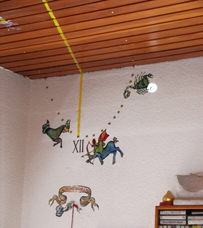ChiLian Chiu
邱 紀 良
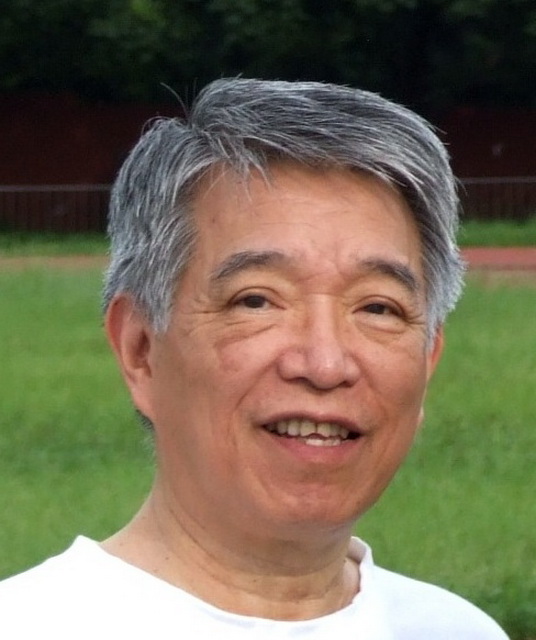
N25, E121, Hsinchu, Taiwan
My Chinese name is 邱 紀 良. The first word is my last name, "Chiu". The second and third ones together form my first name, "ChiLian". Because of accents in Chinese, on some documents my first name may be spelled as "ChiLiang".
My making of sundials is mostly for own joy and educational purposes. Only 6 of them are for public, including the one going to be completed next month.
For example, the photos included here belongs to the 60 cm diameter horizontal dial on the National Tsinghua University campus.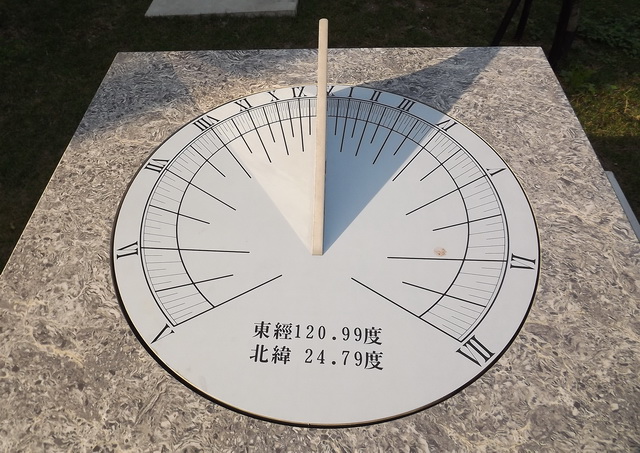
The dial plate is stainless steel covered with white-grey plastic film on which letters, curves and lines are printed.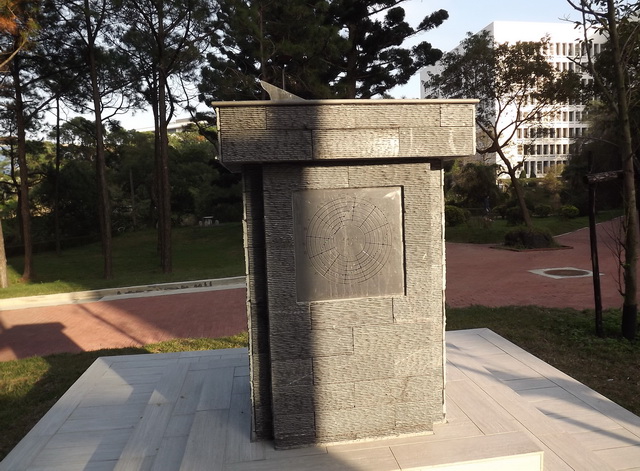
The numbers on the dial face (DSCF1350 Dial.jpg) mark the position: N24.79, E120.99. This dial was finished in Jan. 2012 in order to replace an old one. The motto plate (DSCF1354 Motto.jpg) was taken from the old one, which had seated about 10 meters from this spot for 40 years and was torn down in 2009 to give up the space to construct a new building, part of which can be seen in the background in the motto photo. The gnomon of this dial is a shiny stainless steel plate. 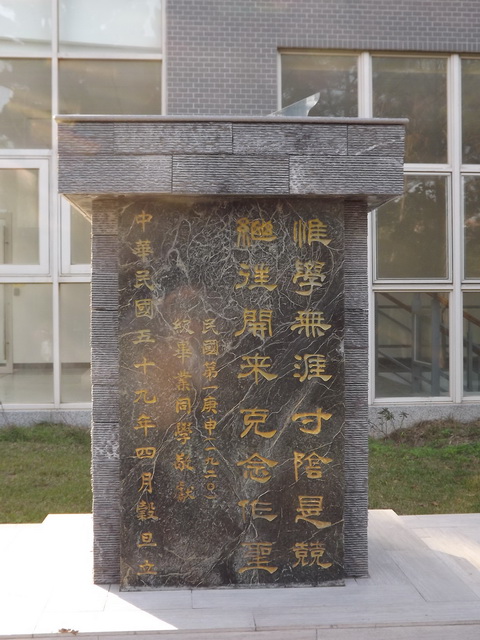

There is another dial I designed for NTHU together with an artist, Paul Lin *). It was done in 2006.
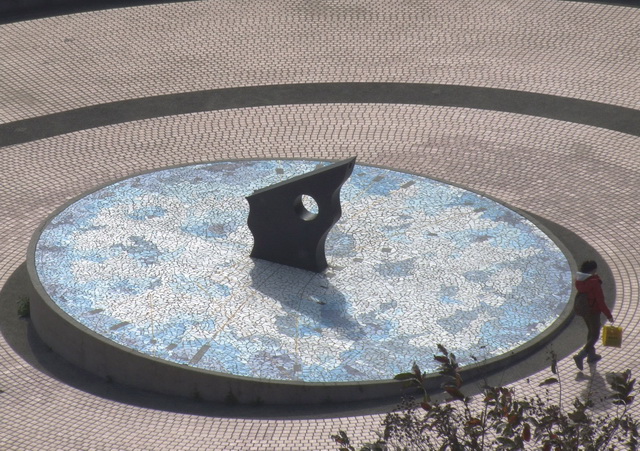
The dial face, having a diameter of 8 meters, is 5 degrees inclined due North.
The gnomon body is made of bronze plate. The black colour, favoured by Lin, comes from oxidation when he made it. The highest point of the body is 185 cm above the ground below it. The southern end is 92 cm above. The upper side length of the gnomon is 184 cm. The east-west width is 30 cm.
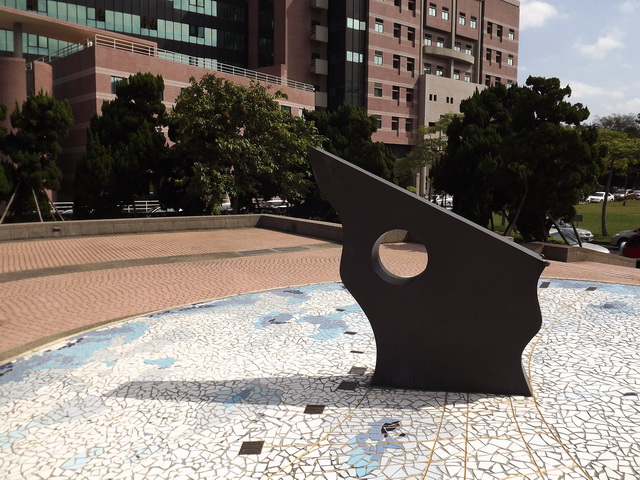
Two balls near the yellow arrows in DSCF0680s.gif serve as gnomon points, whose shadow's locations indicate date. There are 5 date lines on the dial surface: the Summer and Winter solstice lines, the Equinox line, the National Day's line, and the University's anniversary line.
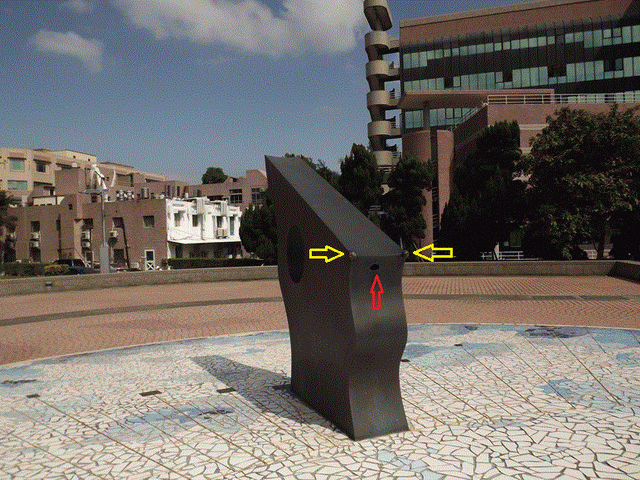
The red arrow in DSCF0680s.gif points at a hole. There is another hole at the other end. Through these holes, the Polaris can be seen in clear nights.
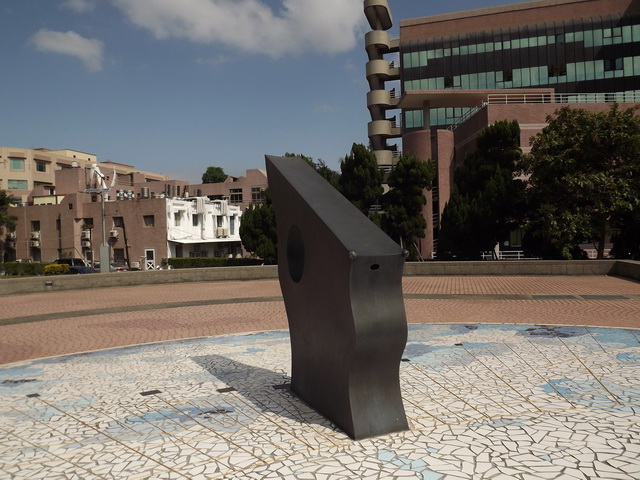
The hour lines are cut on the face down to 15 minutes each.
The big hole on its body has nothing to do with solar time, but symbolizes the Eastern and Western cultures meet here at NTHU.
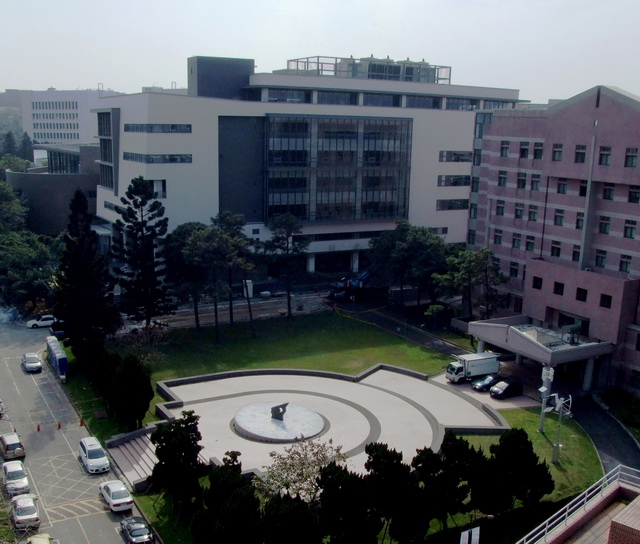
A bronze table of EoT is given on the nearby ground.
This sundial was built to celebrate the 50th anniversary of re-erecting the University in Taiwan, Republic of China.
*) Enclosed is Lin's photo.
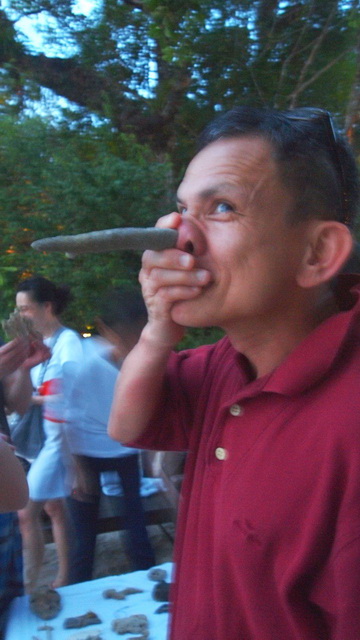
His Chinese first name is
伯瑞
PoJui is his official first name in foreign language.![]()
I am very grateful to ChiLian to have given essential additional information! I hope that at least ONE from HUNDRED visitors of this link will carefully read the following lines!
"About the large sundial in NTHU there are more details I can add:
The dial ground is inclined 5 degrees due North. Besides the art reason, arising from the Earth ground, the inclination not only helps the drainage of rain, increases the hour angle separations near noontime, but also leads observers automatically to the North-side, the correct side to step on.
The dial face is pieced together from broken coloured ceramic tiles to form meaningful image. Three colours are used: White, light blue and blue, to create two pictures to the observers: sky and water.
Besides the sundial, the sky is relevant here, as "sky" is "天" in Chinese character, which is the first word of the University's motto "天行健,君子以自強不息", (celestial bodies move without pause, in such a way persons of noble character ought to learn).
The other picture, water, is relevant to the name of Tsinghua University. Tsinghua is the transliteration of "清華", which is a short wording of "水木清華" (a quiet and beautiful wooded land with streaks, ponds and flowers). Here the first character "水" means clear water. The curves at the two ends of the gnomon body also symbolizes the flexible and soft nature of water."
![]()
For more information you may try
http://blog.xuite.net/nycl.chiu/blog/
In the left column on the front page, the is a list of about 1/7 of the titles in my blog, starting from the newest one. If one likes to read old ones, he has to roll the mouse all way down to the bottom of the page where the usual sign of changing page can be found.
In the right column, there are titles (in bold type and blue color) and abstracts (in black). One has the click on (繼續閱讀)under the abstract to read more. Then one may see pictures coming along with the blog.


Stadt-Siegel von Hsinchu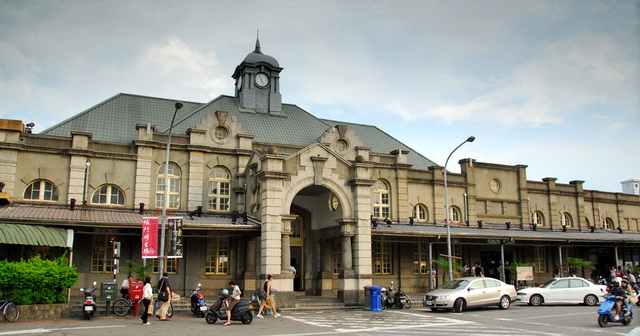
中文:
新竹車站是台鐵縱貫線上的一座主要車站,是新竹市的主車站。新竹車站的站體是目前台灣西部幹線上歷史最悠久的幾座之一,建於日據時代的1913年,採巴洛克式的建築風格,目前已被指定為國家一級古蹟。
English:
HsinChu Station is a major train station of Taiwan's Western main rail line. The station is the main station of HsinChu City. The main building of this station is one of the oldest train stations alongside Taiwan's Western Main Line, its Baroque style main structure was built in 1913 during the Japan Occupation Era, and has been appointed as National Heritage Site.
Photo-Autor: SElefant 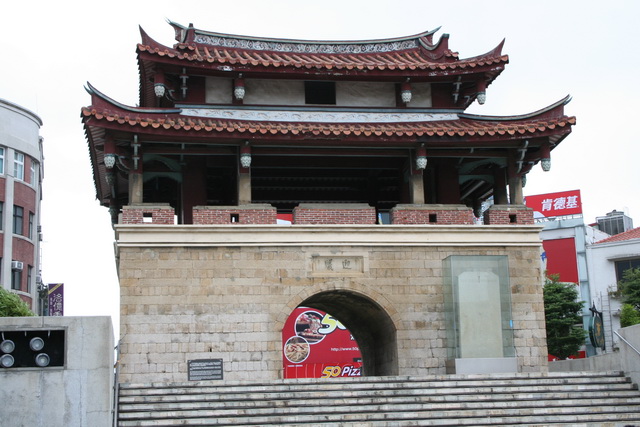
East part of East Gate in modern Hsinchu
Photo by user: Atinncnu at Wikimedia. Released to Public Domain.
![]()

